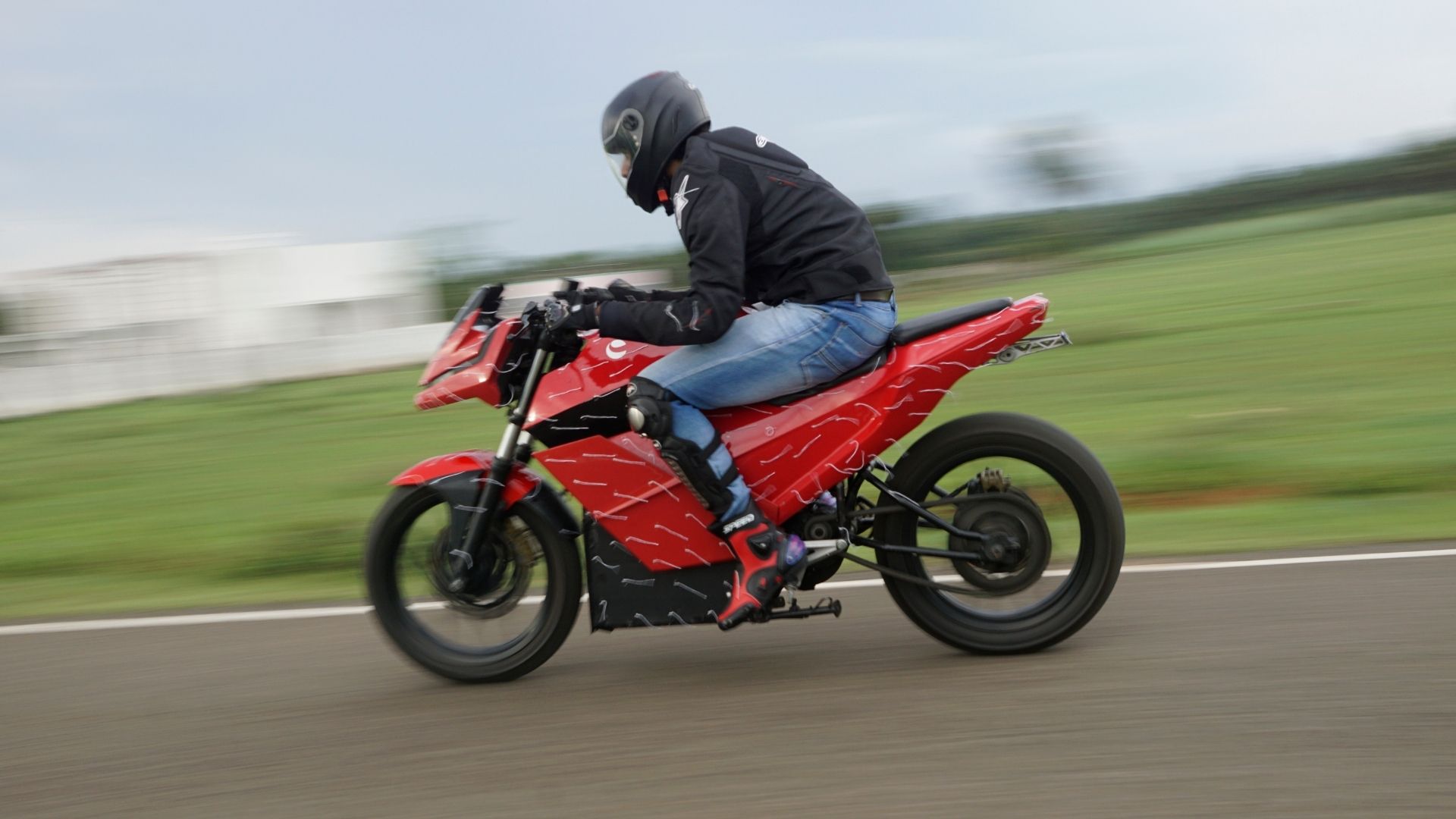Emote Electric offers an effective and ecologically safe alternative to petrol-run bikes.
July 2022

The Surge electric bikes incorporate smart digital instrumentation and a four-speed gearbox. Photograph courtesy Pranav Singanapalli
Pranav Singanapalli launched a start-up in 2011 to work on electric motorcycles, out of frustration with his electric scooter. At that time, electric vehicles (EV) were available in India but they were not yet mainstream or popular. The new electric technology raised concerns among people who were used to getting around differently. Product development was also at the beginning stages and the lack of investment to create a competitive product deterred potential buyers.
Singanapalli, however, had a different take. “My thinking was that they had the cause and effect reversed,” he says. “Coming from a product design background, I figured that if a good product is available, people would gladly buy a two-wheeler EV.”
Ten years later, his prediction rang true as his start-up Emote Electric, earlier known as eMotion Motors, graduated from the Nexus Start-up Hub’s program, won recognition and financial support, and started accepting national and international pre-orders for its e-motorcycles.
Emote Electric gained critical depth of knowledge over 10 years as its team researched, designed and tested its electric motorcycle. The start-up also overcame major challenges in its quest to develop an economical, high performance and green alternative to petrol-run motorcycles.
Challenges vs. opportunities
Emote Electric not only developed entirely new technologies in response to the global shortages of critical components, it also reworked the 2015 e-motorcycle model into a geared electric bike called Surge, which was unveiled in 2021.
According to Singanapalli, the addition of the gearbox was born out of a need to bring down costs. “It sounds counterintuitive, considering we are adding 30 new parts. But the gearbox is primarily a lever, and extra gears help us extract a lot more performance from a relatively smaller motor, which draws less power and allows us to use a smaller control unit and a smaller battery,” he says. Since these three components constitute 60 to 70 percent of the vehicle cost, reducing that by 50 percent translates to a 25 percent net lower cost for the start-up.
With the supply chain in a constant state of flux, Singanapalli found they had to do multiple redesigns to replace parts they couldn’t get. “Integrated circuits were hard to come by and we couldn’t afford to pay 10 times the price on the open market,” he says “We were playing the game of ‘whack-a-mole’ with many of our components, losing money and market opportunity.”
Singanapalli says the good news is that the cost of many EV components, particularly the battery costs, has come down over the last decade. And Emote Electric’s dedication to EVs from day one is now yielding benefits. “Tightening emissions norms has made the cost of petrol bikes go up significantly,” says Singanapalli. “It’s critical to manage our costs to be competitive with petrol motorcycles and far better subsidies compared to 10 years ago have helped increase our component budget.” In addition, a number of incentives are offered by the central and state governments for purchase of EVs in India. These include tax exemptions for EV loans, exemption from fees for issuing or renewing registration certificates and subsidies for electric two-wheelers based on the size of their lithium ion battery packs. The subsidies range from Rs 500o to Rs 10,000 per kWh of battery capacity and have helped lower the sale price of EV bikes.
Product line
In 2015, Emote Electric’s initial prototype for its two-wheeler EV called for a 100kmph motorcycle with 80km/charge range and acceleration figures rivaling a typical 150cc gasoline motorcycle. There was no gearbox, no smart instrumentation and one swappable battery.

Prototypes of two bike models at an Emote Electric workshop. Photograph courtesy Pranav Singanapalli
“These now have evolved into a 120kmph motorcycle with 170km/charge/battery (500 km net of three batteries) with smart digital instrumentation and a four-speed gearbox that handily beats any petrol motorcycle in its class in acceleration,” Singanapalli notes.
In 2021, Emote Electric was one of the 11 finalists for the Qualcomm Design in India Challenge. The start-up went on to receive technical assistance and support from Qualcomm. “We had their expertise and guidance for the smart instrumentation cluster that powers our motorcycle,” says Singanapalli. “They also provided technical assistance in sourcing parts, introductions to potential customers and investors and building up intellectual property.”
From one model in 2015, Emote Electric now has two product lines, each with two variants available for users across the world.
Hillary Hoppock is a freelance writer, former newspaper publisher and reporter based in Orinda, California
Market me kab tak aayega Emote bike?
Paramjeet Singh
Market me kab tak aayega Emote bike?